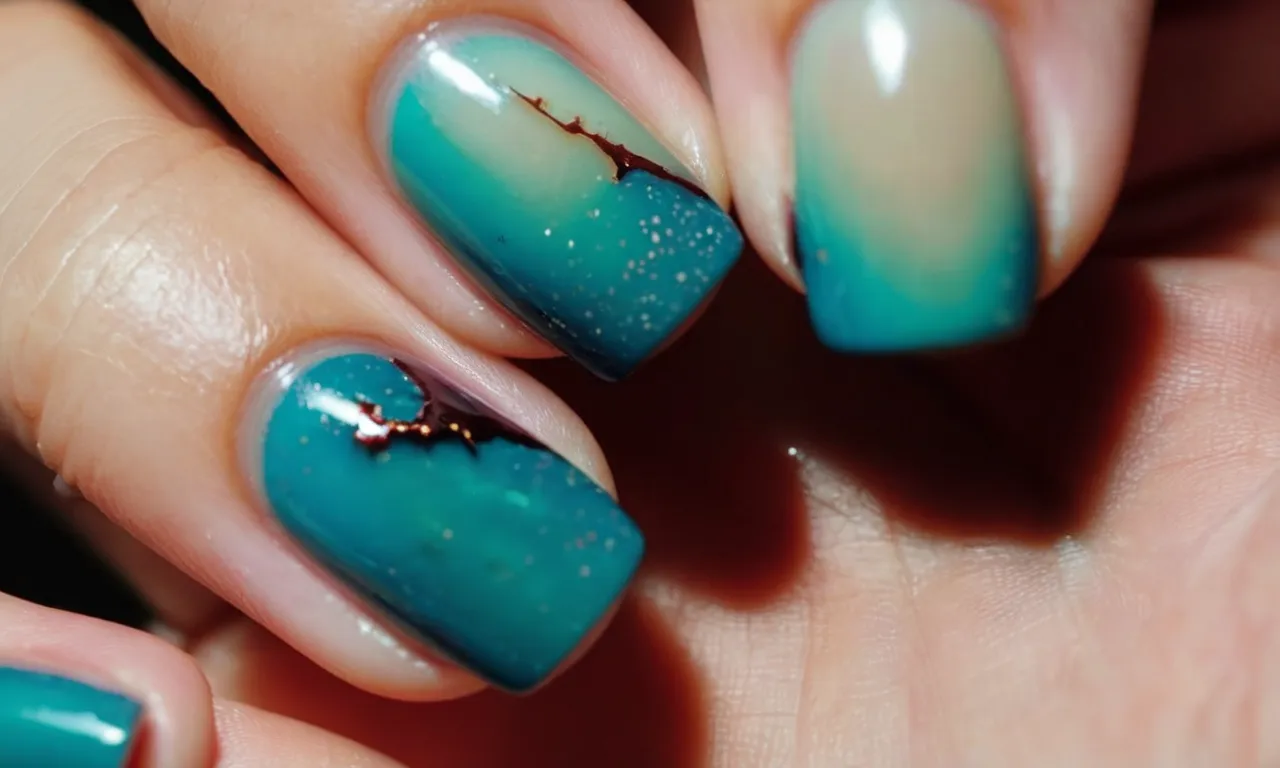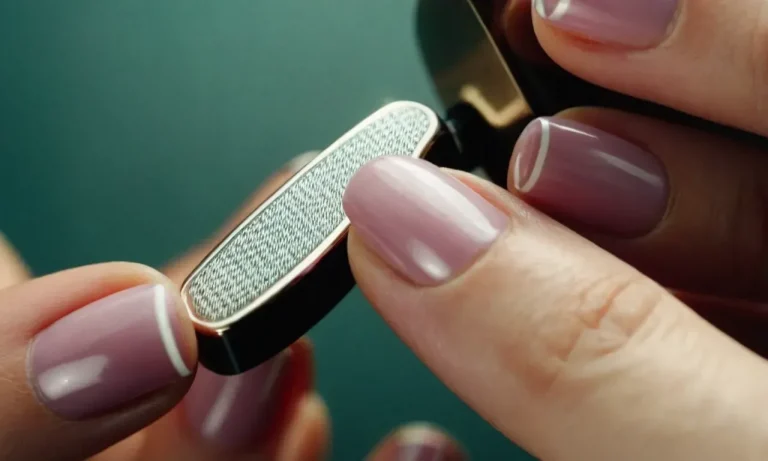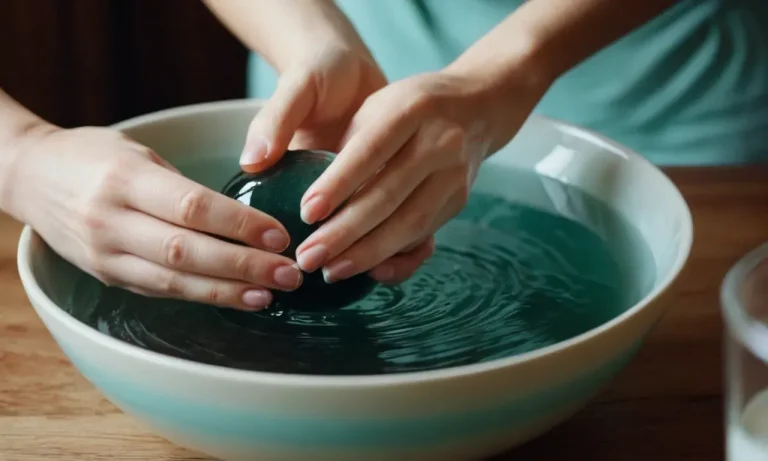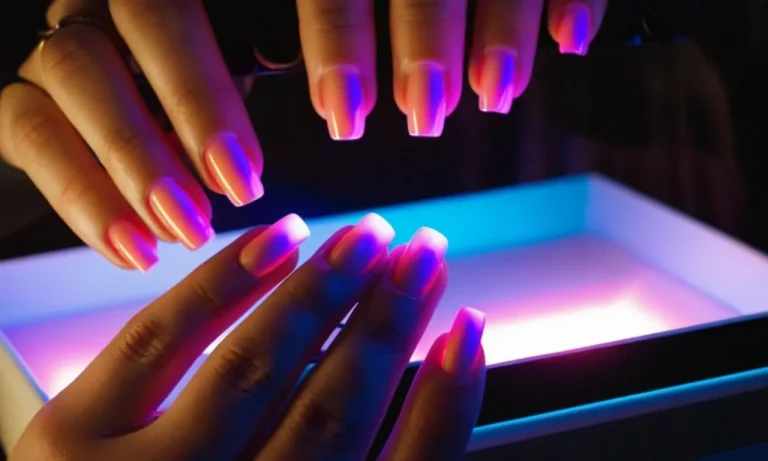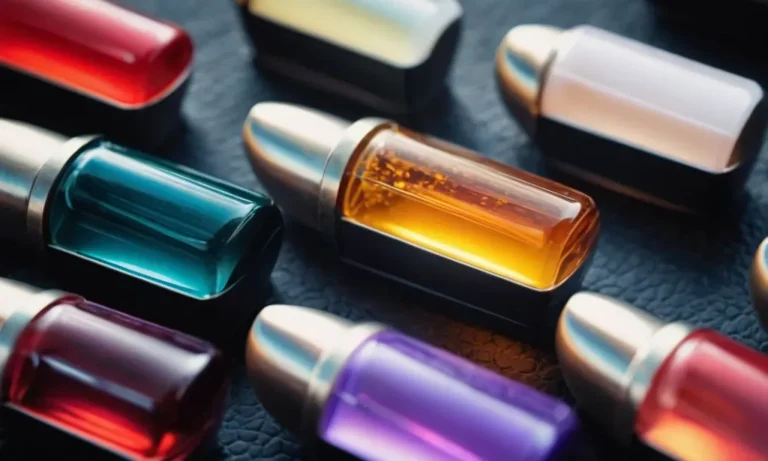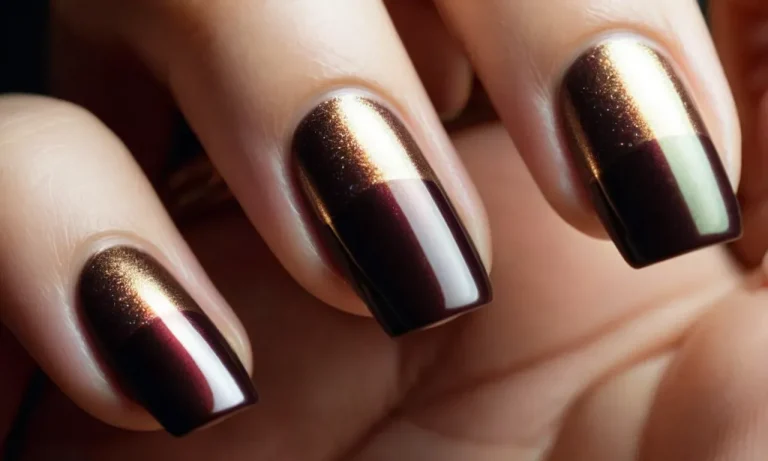Can You Put Gel Polish On A Bruised Nail?
If you just had an accident and bruised your nails, you may be wondering if you can still get your nails done or put on gel polish. With a big event coming up, the last thing you want is ugly bruised nails ruining your look.
The quick answer is: you can put gel polish on a bruised nail, but you need to be very careful. Applying gel polish to a bruised nail does come with some risks that you’ll want to consider first.
In this comprehensive article, we’ll discuss everything you need to know about putting gel polish on bruised nails. You’ll learn what risks are involved, tips for applying gel safely, how long to wait before applying gel, and more.
What Happens When You Bruise Your Nails
Definition and causes of bruised nails
A bruised nail, also known as a subungual hematoma, occurs when blood collects under the nail after trauma causes damage to the nail bed or finger (1). This leads to bruise-like discoloration of the nail. Common causes include:
- Jamming or hitting the fingertip
- Dropping something on the nail
- Tight shoes pressing against the nail
The accumulated blood underneath the nail exerts pressure, leading to throbbing pain and tenderness (2). Without proper treatment, the pressure can also cause the nail to separate from the nail bed.
Signs and symptoms of a bruised nail
The most distinct sign is a reddish-blue or black and blue discoloration under the nail. Other symptoms include (3):
- Moderate to severe pain
- Swelling around the nail
- Difficulty moving the finger
- Nail plate beginning to detach from nail bed
As the bruised area expands, more swelling and throbbing pain occurs. Blisters with blood or pus may also develop underneath or around the nail if it gets infected.
Risks and complications
Without drainage of the blood under the nail, complications can arise (4):
- Permanent nail deformity or loss
- Chronic pain during nail growth
- Loss of fingernail
- Bone infection (osteomyelitis) if the bone under the nail is exposed to bacteria
Seeking prompt medical care reduces these risks. Doctors can perform a nail trephination using a hot needle or small drill bit to make a hole in the nail and drain the blood (5). Antibiotics may also be prescribed if infection occurs.
References:
(1) https://www.aad.org/public/diseases/a-z/subungual-hematoma-nail-bruise
(2) https://www.healthline.com/health/subungual-hematoma
(3) https://www.medicalnewstoday.com/articles/327294
(4) https://www.ncbi.nlm.nih.gov/books/NBK470280/
(5) https://www.aafp.org/afp/2002/0501/p1823.html
Is It Safe to Apply Gel Polish on a Bruised Nail?
Applying gel polish on a bruised nail can be risky and should generally be avoided until the bruise has fully healed. Here are some key considerations on the safety of using gel polish over a bruised nail:
Potential risks of applying gel on bruised nails
There are a few potential dangers with putting gel polish on a bruised nail:
- The UV/LED light used to cure gel polish generates heat that could worsen inflammation and pain in the bruised nail bed.
- Chemicals in gel polish can irritate the already damaged nail bed and surrounding skin, potentially worsening the bruise.
- Trapping excess moisture under the gel could lead to bacterial or fungal infections in the injured nail.
- If the bruise is caused by a hematoma (bleeding under the nail), the gel polish could delay proper healing.
Precautions and safety tips
If you decide to apply gel polish on a bruised nail, take these precautions to reduce risks:
- Avoid using dark colors, as they absorb more heat from the curing light.
- Use the curing light on its lowest setting and expose the nail for the shortest time possible.
- Apply gel as thinly as possible over the bruised area.
- Use a gentle file to lightly buff away the top gel layer after curing.
- Avoid cutting or trimming the bruised nail before applying gel.
It’s also critical to monitor the nail closely in the following days. If you notice increased throbbing, redness, oozing, foul odor or other signs of infection, remove the gel polish immediately.
Waiting for the bruise to heal first
The safest option is to wait until the bruised nail has fully healed before applying gel polish. It typically takes 1-2 weeks for a minor bruise to heal. Signs the bruise has healed include:
- The nail regains its normal color.
- Swelling and tenderness have resolved.
- No blood or fluid remains trapped under the nail.
- The nail feels firmly attached to the nail bed.
It’s best to hold off on gel manicures until the nail is back to normal. This prevents potential complications and allows proper healing. Be patient and care for the injured nail until it has recovered. Protecting your health is more important than having pretty nails!
How to Apply Gel Polish on a Bruised Nail
Steps for safe application
When you have a bruised nail, take extra care when applying gel polish. The nail may be sensitive or damaged, so gentle handling is key. Follow these tips for safe gel application:
- File the nail gently with a soft file to smooth any jagged edges.
- Avoid pushing back the cuticles, which could cause further irritation.
- Apply gel primer sparingly to avoid getting liquid on the damaged nail bed.
- Use thin layers of gel base coat and color—thick layers won’t cure properly.
- Cure each layer for 5-10 seconds less than normal to prevent heat sensitivity.
- Cap the free edge so the bruised part of nail stays protected.
Choosing gel polish colors and finishes
Which gel polish colors and finishes work best on a bruised nail? Consider these options:
- Sheer neutral tones downplay discoloration and bruising.
- Glitter gels distract from imperfections with sparkle.
- Darker vampy colors camouflage bruises.
- Avoid gel polish with a thick, opaque formula, which won’t cure properly.
- Glossy finishes make nails look healthy and strong.
- Matte gels show imperfections more despite being on-trend.
Caring for bruised nails with gel polish
Continue caring for your bruised nail while wearing gel polish by:
- Keeping the area clean to prevent infection.
- Letting the nail breathe between gel manicures.
- Using cuticle oil to stimulate healing.
- Taking gel polish off gently with foil method.
- Avoiding trauma by wearing gloves for chores.
- Using Q&A Nail Repair Serum for natural healing.
Studies show bruised nails heal within 4-6 weeks on average. Book follow-up appointments with your nail tech every 2-3 so they can monitor progress.
With proper gel application and aftercare, you can maintain beautiful nails while you heal. Just remember—be extra gentle with sensitive bruised nails!
Aftercare Tips for Bruised Nails with Gel Polish
Avoiding further injury
If you have a bruised nail with gel polish still on top, it’s important to avoid any further injury to the nail. This means being extra careful with your hands and fingers so you don’t bump, hit, or press on the bruised nail.
Try to limit activities that put a lot of pressure on the nails, like typing, and wear gloves when doing housework or yardwork. The bruised nail is already compromised, so you want to baby it as much as possible while it heals.
Keeping the nails clean and dry
Keeping your bruised nail clean and dry under the gel polish is crucial for proper healing. Gently clean the nail with soap and water, being careful not to put too much pressure on the bruised area. After washing, thoroughly dry the nail and skin around it.
You may want to avoid prolonged water exposure by wearing gloves when washing dishes or showering. Moisture trapped under the gel polish could lead to infection in the damaged nail bed.
Watching for signs of infection
Even with gel polish still on, it’s important to monitor the bruised nail for any signs of infection like redness, swelling, increased pain, heat coming from the nail, and discharge/pus. If you notice any of those symptoms, it’s best to see your dermatologist right away to treat the infection before it worsens.
Infections need medication, and the gel may need to be removed if it is inhibiting treatment.
Taking off gel polish safely
When it’s time to remove the gel polish from a bruised nail, be very careful. Soak cotton balls in pure acetone and place them gently over each nail to avoid rubbing or scraping the bruised area. Let the acetone sit for 10-15 minutes before gently sliding the gel off the nail. Do not pick at it.
Repeat if needed until all gel residue is gone. Moisturize the nail after. Getting the gel off properly reduces the risk of further injury. Allow the bruised nail to heal completely before applying any new gel polish.
When to See a Doctor About a Bruised Nail
Signs of a serious injury
If you experience trauma to your nail that results in a dark bruise under the nail, it’s important to watch for signs of a serious injury and see a doctor promptly if they occur. Here are some red flags to look out for:
- The pain is severe and does not improve with over-the-counter medication like acetaminophen or ibuprofen.
- The nail is partially or fully detached from the nail bed.
- You notice redness, warmth, and throbbing around the nail, which could indicate an infection.
- Pus is draining from around or under the nail.
- The skin under or around the nail is lacerated or torn.
You should see a doctor within 24 hours if you notice any of these signs. Leaving an infected or seriously injured nail untreated could lead to permanent nail damage or even loss of the nail. It’s better to be safe and get it checked out.
If infection occurs
Sometimes a bruised nail can become infected, most commonly with bacteria. Signs of infection include redness, swelling, throbbing pain, drainage of pus, foul smell, and red streaks around the nail. If this occurs, it’s important to see a doctor right away.
A doctor can diagnose the infection, prescribe antibiotic medication, and provide tips on keeping the area clean to prevent further infection. For severe nail infections, the doctor may need to surgically remove part of the nail or drill a hole through the nail to drain the infection.
Leaving a nail infection untreated could lead to complications like a skin abscess or permanent nail damage. Seeking prompt treatment helps cure the infection faster and reduces the risks of complications. So at the first sign of infection around a bruised nail, call your doctor to be evaluated.
For persistent pain and swelling
It’s normal to have some pain, swelling, and bruising around a bruised nail for the first few days. But if the pain and swelling persist beyond 5-7 days and don’t seem to be improving with self-care, it’s a good idea to see a doctor.
A doctor can examine your nail, rule out any serious injury or infection, and provide appropriate treatment. For example, the doctor may:
- Drain fluid from under the nail to relieve pressure.
- Trim or remove part of the nail if it has become detached from the nail bed.
- Prescribe stronger pain or anti-inflammatory medications.
- Provide tips to promote healing, like taping the nail for stability.
Seeing a doctor for persistent nail issues provides peace of mind that nothing serious is going on and gets you access to treatment options for improved healing.
Conclusion
To summarize, you can apply gel polish to a bruised nail as long as you take proper safety precautions. It’s best to wait until the bruise and swelling have healed significantly before applying gel. When you do apply gel, use thin layers and avoid the nail bed.
Be very gentle, and take great care not to cause further injury.
With some caution and care, gel polish can help conceal and protect your bruised nails while they heal. Just monitor for any signs of complications and see your doctor if you have concerns. With time and patience, your nails will be back to their beautiful best.

